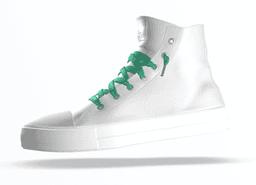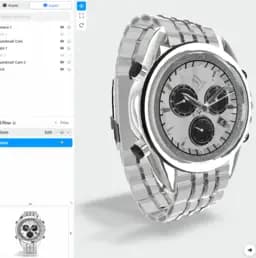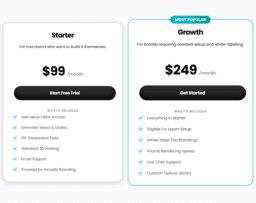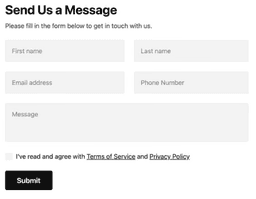In-Depth Analysis: Deck.gl vs OpenLayers
For large-scale, data-driven visualization, Deck.gl excels with WebGL2, a layered framework and effective handling of rendering and events. However, for mapping applications, OpenLayers, with robust API, broad data format support and a vigilant testing and alert system, is a compelling choice.

Key Differences Between Deck.gl and OpenLayers
- Data Visualization vs Map Applications: Deck.gl specializes in large-scale data visualization, while OpenLayers excels in Web-based map applications.
- Framework: Deck.gl uses a layered data framework, OpenLayers focuses on ease of map setup and handling complexities.
- Data Handling: Deck.gl handles large data rendering and updating while OpenLayers offers a meticulous testing, evaluation and alert system for data management.
- Integrations: Deck.gl offers a range of third-party integrations, whereas OpenLayers primarily focuses on robust APIs for primary functions
- Community: Both foster active communities, with OpenLayers offering a developer community on Discord and Deck.gl on Slack.
| Comparison | Deck.gl | OpenLayers |
|---|---|---|
| Focused Domain | Data Visualization | Map Applications on Web |
| WebGL2-powered | Yes | No |
| Data Handling | Large-Scale | Geo-referenced images, vector tiles, open/proprietary vector data |
| APIs | Flexible, Extendable | Strong, easy setup |
| Customizable Layers | Yes, including icons, polygons, text | No |
| Integration | With major basemap providers | OpenStreetMap, Web Feature Service |
| Community | Open to contributions | On Discord, encourages contributions |
| TypeScript Support | No | Yes |
| Typical Use Case | Interactive event handling: picking, highlighting, filtering | Model management, edge case detection, error tracking |
What Is deck.gl and Who’s It For?
Emerging as a large-scale data visualization tool, deck.gl is designed for high-performance, powered by WebGL2. Simplifying visualization for big data has never been easier, making it ideal for individuals and companies needing to represent dense data in a comprehensible way, like data analysts, developers, and researchers. Being highly customizable, deck.gl can form parts of other complex systems, hence presenting a virtuous choice for system designers and developers.

Pros of deck.gl
- Ideal for high-performance, large data
- Delivers flexible APIs, extendable core classes
- Supports a broad spectrum of usage modes and third-party integration
Cons of deck.gl
- Requires technical knowhow for utilization
- May not be suitable for small-scale projects due to its expansive nature
What Is OpenLayers and Who’s It For?
OpenLayers, a renowned face in the tech world, focuses on developing proficient map applications for the web. It works well for developers creating detailed, personalized maps or geospatial applications. Additonally, it also proves beneficial for businesses needing to analyze or display geographical data. With its ethos centered around making map application setup simple yet capable of handling intricate requirements, OpenLayers caters to a varied audience, from novice developers to seasoned professionals.

Pros of OpenLayers
- Compatible with a variety of data formats
- Strong API and easy map application setup
- Comprehensive testing, evaluation, and observation features for LLMs
Cons of OpenLayers
- Requires good programming skills for optimization
- ‘OffscreenCanvas’, though beneficial for responsiveness, is not yet widely supported in all browsers
Code Examples for Deck.gl & OpenLayers
Deck.gl
The following Deck.gl example is an intermediate level snippet that demonstrates the creation of an interactive, 3D scatterplot. You’ll need to have installed deck.gl and load the data set manually before running this code. The scatterplot will allow users to see varying data points in a 3D environment with the ability to rotate and zoom around the visualization.
import { ScatterplotLayer } from '@deck.gl/layers';
import { StaticMap } from 'react-map-gl';
function App({
data = DATA,
radius = 30,
intensity = 1
}) {
const layer = new ScatterplotLayer({
id: 'scatterplot',
data,
pickable: true,
opacity: 0.8,
stroked: true,
filled: true,
radiusScale: 6,
radiusMinPixels: 1,
radiusMaxPixels: 100,
lineWidthMinPixels: 1,
getPosition: d => d.position,
getRadius: d => Math.sqrt(d.exits),
getFillColor: d => ,
getLineColor: d => ,
getLineWidth: 1,
getIntensity: 1
});
return (
<deckgl initialviewstate="{INITIAL_VIEW_STATE}" layers="{}">
<staticmap>
</staticmap></deckgl>
);
}OpenLayers
The OpenLayers code snippet below renders an interactive map with a highlighted geographical feature. The sample uses a vector data source for feature visualization. Make sure you’ve installed OpenLayers before executing the code. The final product is a responsive map with an outlined area or pathway depending on the feature defined.
import Map from 'ol/Map.js';
import View from 'ol/View.js';
import GeoJSON from 'ol/format/GeoJSON.js';
import {Tile as TileLayer, Vector as VectorLayer} from 'ol/layer.js';
import VectorSource from 'ol/source/Vector.js';
import {Circle as CircleStyle, Fill, Stroke, Style} from 'ol/style.js';
import {OSM, Vector as VectorSource} from 'ol/source.js';
var raster = new TileLayer({
source: new OSM()
});
var style = new Style({
fill: new Fill({
color: 'rgba(255, 255, 255, 0.6)'
}),
stroke: new Stroke({
color: '#319FD3',
width: 1
}),
image: new CircleStyle({
radius: 5,
fill: new Fill({
color: 'rgba(255, 255, 255, 0.8)'
}),
stroke: new Stroke({
color: 'red',
width: 1
})
})
});
var vector = new VectorLayer({
source: new VectorSource({
url: 'https://openlayers.org/en/latest/examples/data/geojson/countries.geojson',
format: new GeoJSON()
}),
style: function(feature) {
style.getText().setText(feature.get('name'));
return style;
}
});
var map = new Map({
layers: ,
target: 'map',
view: new View({
center: ,
zoom: 1
})
});Deck.gl vs OpenLayers: Which Suits Your Projects?
Based on data-intensive capabilities and target use-cases, let’s dissect each platform’s applicability to identify the ideal pick.
Developers Books on Visualization of Large Data
For developers tasked with handling large data visualization, deck.gl is the undisputed champ. It’s WebGL2-powered, capable of rendering and updating large datasets, and offers interactive event handling. Specialty layers from polygons to text are easily composed.

Map Application Developers
OpenLayers shines when utilised for creating map applications on the web. Supporting various data formats and integration with OpenStreetMap, it’s conducive for addressing complex requirements while developing map applications.

AR/VR Creators
Deck.gl drives the narrative for AR/VR creators. Its versatile visual layers and distinct views foster unique and immersive experiences, resonating with AR/VR world-building initiatives.

Data Analysts in Traffic Management
For professionals dealing with traffic management analytics, OpenLayers is the go-to platform. Its application in 2019 Finland road analytics underpins its utility in this niche. It also enables accident data incorporation, elevating road safety initiatives.

Note: In deciding between deck.gl and OpenLayers, consider your needs and project-specific requirements. While deck.gl dominates data visualization, OpenLayers best serves developers with map-related tasks.







